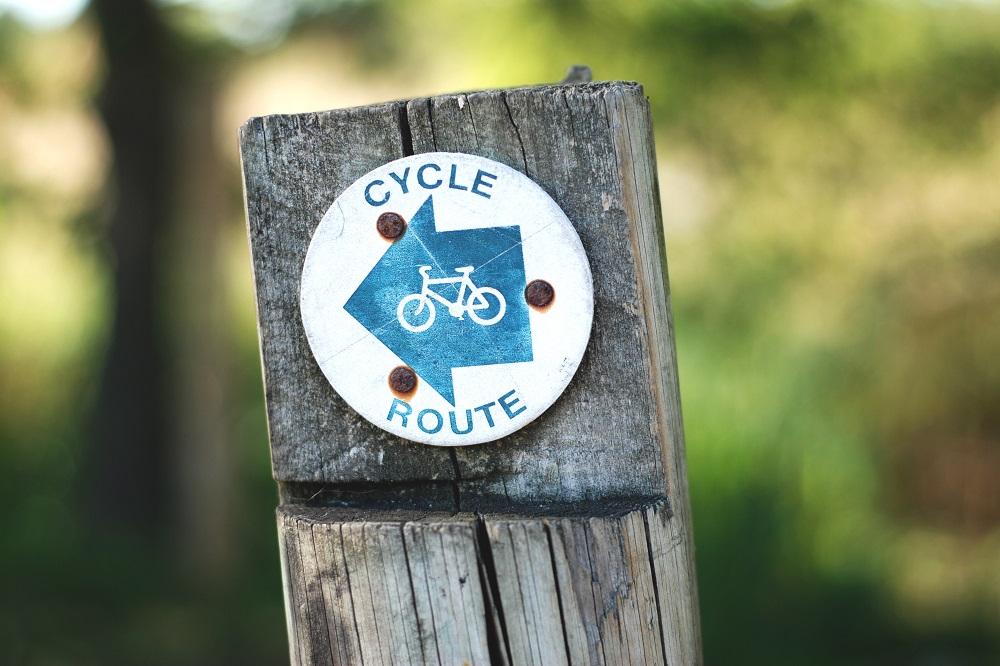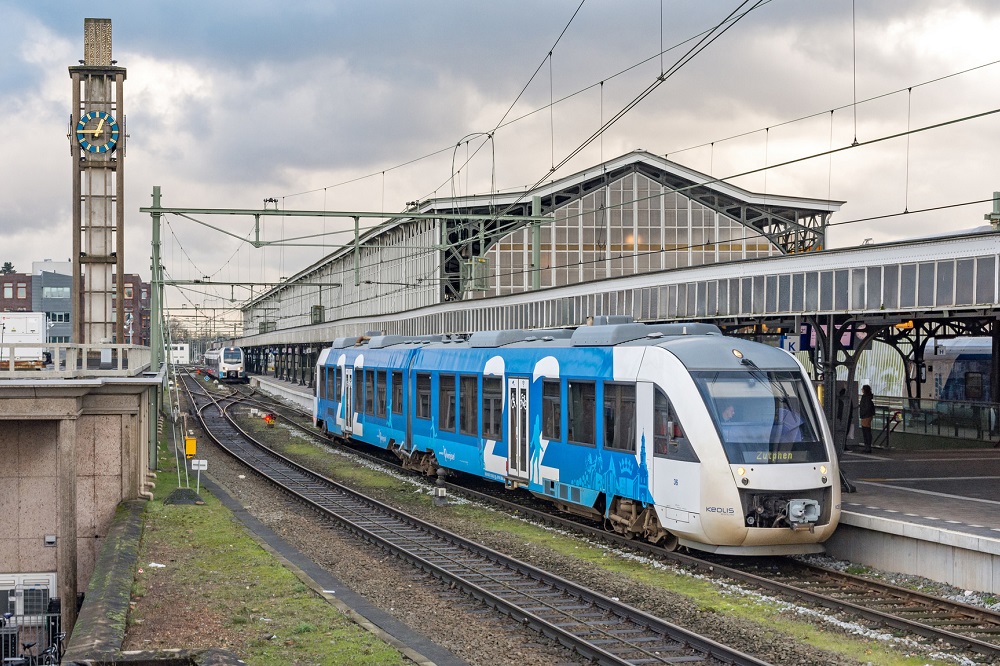20 sustainable steps to tackle Wales’ transportation problems

Neil Anderson, transportation, sustainability and macroeconomics consultant at Pace Consultants, Rhydyfelin RCT
The cancellation of the new M4 relief road marks an opportunity for Cymru to break with the unsustainable transportation policies of the past, especially our chronic over-reliance on cars.
However, there are barriers to be overcome before we can even begin seeking appropriate solutions.
The first barrier is the notion that investing in transport infrastructure is essential for economic growth.
While the growth in transport volume has closely followed rates of economic growth, correlation is not causation. Further, as the (UK) Secretary of State for Transport was advised by 32 professors of transport in 2013:
“Recent evidence from the UK and internationally shows signs of road traffic growth leveling (sic) off, even after accounting for lower than anticipated economic growth…which the Department for Transport has never forecast…”
They noted…
“…a range of views as to the importance of new transport infrastructure in stimulating economic growth. The evidence base is not as strong as you, or we, might wish it to be.”
Our service and knowledge-led economy should not be assumed to be as tightly coupled to road traffic for its success as it once might have been.”
The second barrier is that economic growth, elusive and limited though that has often been, and in the form that has massively undermined our life support systems, cannot continue without catastrophic consequences for all life on Earth. There is no Planet B.
It is essential that we re-focus locally and internationally on other opportunities for growth – personal, social, cultural, societal – and leave gross material consumption behind.
The third barrier, and possibly the most difficult to overcome, is the extreme reluctance of elites in all countries to accept that business as usual is no longer an option.
Many of the powerful have major investments in what are likely to become stranded assets – the oil and gas industry being the most notable example – and will resist change.
Many large companies will become dinosaurs, unable to change fast enough to contribute to solutions, thus remaining parts of the problem.
Solutions
Starting with a relatively clean sheet, I offer the following proposals for what might we do in Cymru:
- Secure full devolution of all transport powers
It is obvious that we are better placed to resolve transportation (and all other) issues in our own country. Devolution of all transport powers would give us an opportunity to set up a coherent and integrated national policy framework for passengers and freight, focusing on safety, access (not mobility), efficiency, equity and affordability.
- Revise the Highway Code to give absolute rights of way to pedestrians and people in wheelchairs in all shared space (eg. footpaths, supermarket carparks, cycleways)
We must redress the balance between people and vehicles, prioritising safety in our planning and design. While desirable, adopting Vision Zero in Cymru would require more far-reaching changes to the Highway Code.
- Pedestrianise urban and suburban centres
Switching to less expensive forms of transportation would allow more of our disposable income to be directed into more labour-intensive sectors, including retail and leisure. Greening our urban centres would improve their ambience and reduce air pollution.
- Adopt strict or presumed liability in relation to any collisions
Strict liability assumes that in a collision, the driver of the higher-powered vehicle is presumed to be at fault, as in most of Europe. This applies to cyclist-pedestrian collisions as well, reinforcing the right of way for pedestrians.
- Reduce the number of carparks in urban centres, parking buildings, private carparks and public facilities by 10% every year for at least 5y and use the space released for landscaping, cycle parking, public amenity…
Peak traffic flows are largely driven by the availability of relatively cheap parking in urban centres.

- Redesign urban bus services so they can be utilised as a network with efficient interchanges with all other modes and routes
Most bus services operate on commuter routes, and few passengers know much about the rest of the network. Interchange design, especially with other modes, and maps are often poor.
- Complement mainline services with community buses
Community buses can be provided at reasonable cost, and quickly become part of the social fabric in suburbs and towns. On-demand services need have no fixed routes, and act as feeders to mainline bus routes and other modes.
- Provide on-demand bus services in rural areas
Scheduled services in areas of low population require heavy subsidies. Community buses are increasingly popular, providing lifeline services in remote areas. They should be strongly supported.
- Install high-quality broadband and promote homeworking
In Cymru there are still areas where broadband is non-existent or much too slow. Computer-based homeworking has major potential for boosting the productivity of and employment in local areas – if there is fast broadband.
- Stop urban centre growth in favour of creating decentralised activity centres to minimise commuting
The dominance of our mini-London-on-the-Taff, a purported growth pole, has done little for the rest of Cymru, its commuters sucking the life out of what have become dormitory suburbs in the Valleys. Commuting is a waste of time, energy, money and effort, and is unsustainable.

- Build low-cost Light Rail Vehicles (LRVs) and deploy them rapidly on-street in Cardiff, Newport and other large centres and their environs with efficient interchanges with other modes
Trams (of appropriate scale) would revolutionise our urban centres, as they have in 600 cities worldwide. Apart from cycling, trams are the most efficient form of urban transportation.
Building our own trams (initially using refurbished rolling stock), rolling Light Rail (LR) track at Port Talbot and manufacturing simplified overhead would provide an effective solution for Cardiff, Newport, Swansea and other towns currently over-run by cars. LR routes should also be designed to carry freight.
The skillsets made redundant by Ford in Bridgend are transferable and should not be squandered.
- Connect major towns by LR
Coupled to a decentralisation and regionalisation strategy, on-road trams would provide sustainable links when heavy rail would be uneconomic. The restoration of the coastal rail route is unlikely to prove economic for heavy rail, but possibly not for light rail.
- Regionalise administration into 4 – 5 regions and develop appropriate infrastructure in regional centres and their hinterlands
Local government is too small to be effective and fails to attract the necessary talent. Regions would plug the infrastructure gaps and encourage local businesses to increase their range.
- Review plans for the Metro to electrify the core Valley lines utilising simplified overhead and low-profile track, and phase-out dual and triple mode powercars
Poor decisions have been made about rail electrification in Cymru, building in additional cost (and long-term diesel pollution). Lower cost options appear to have been ignored.

- Abandon tram-train
Tram-train is either wholly inappropriate for urban streets (out of scale) or uneconomic to operate. Tram-train is a hybrid that fails to meet the requirements of the different transportation tasks performed by mainline rail and by light rail and is sub-optimal in each role.
- Electrify the mainline to Fishguard after rationalising the route west of Cardiff
It is a false economy not to electrify the whole of the line, though consideration could be given to interchanging with light rail west and north of Carmarthen.
- Provide railheads for freight on integrated heavy and light rail services
Moving freight off-roads to enhance safety and efficiency would be greatly facilitated by small-scale but widely-deployed cross-dock infrastructure.
- Provide passing bays and lanes on major road routes within Cymru
Slow traffic unnecessarily reduces inter-city travel times in Cymru. By providing additional space for tractors, caravans and trucks to pull in, faster traffic could proceed with less hindrance.
- Provide more viewing points adjacent to major roads
Our country is beautiful, but the lack of safe stopping places on highways restricts our views of it. Many such places should provide facilities for travellers – clean toilets and waste receptacles, for example.
Much better interpretations of place, and of walking and cycle tracks would also improve our access to the countryside.
- Plan for straightened north – south (heavy) rail and road routes wholly within Cymru
The pattern of our highways and rail routes reflect the historic dominance of England and its extraction of Cymrian resources (these days, highly-skilled people commuting to Bristol, London and Manchester). These routes are largely east-west.
The Cymru of our future will require good communications between north and south by both road and (heavy) rail. We should develop indigenous tunnelling expertise to assist in straightening and shortening these and other routes.
Support our Nation today
For the price of a cup of coffee a month you can help us create an independent, not-for-profit, national news service for the people of Wales, by the people of Wales.





